The mysteries and wonders of space, along with some astounding mind-blowing space facts, never cease to astound humanity as it looks out into the vastness of the universe. Although we find the universe mysterious, scientists can still unearth a ton of incredible mysteries. we will explore ten mind-blowing space facts that will not only ignite your curiosity but also expand your understanding of the cosmos.
1. Mercury’s Unexpected Tail
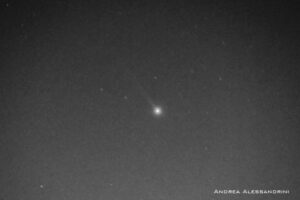
Mercury, the smallest and innermost planet in our solar system, is a hot and desolate world. However, it has one surprising feature: a tail. This tail consists not of dust and gas like comet tails, but of sodium atoms.
2. The Lunar Resting Place
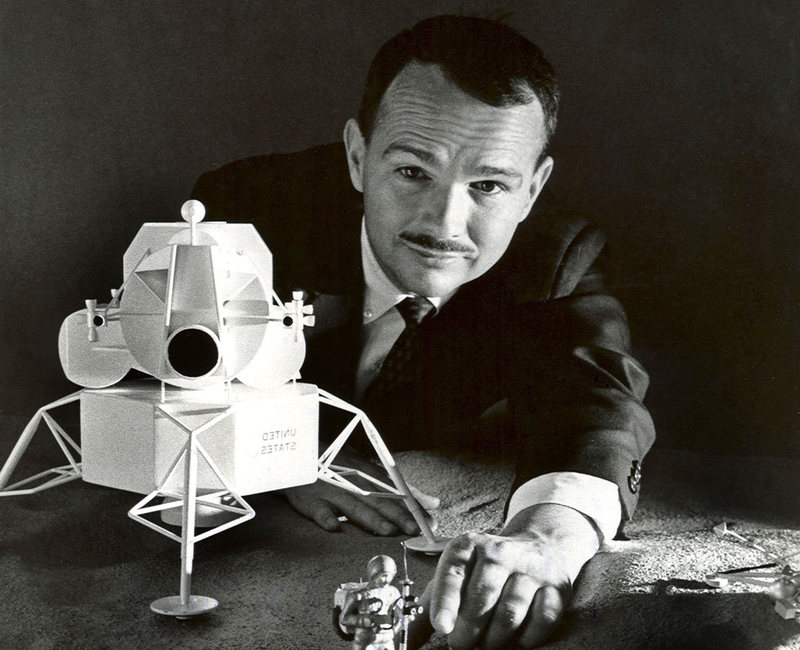
Public Domain.)
Eugene Shoemaker, a renowned figure in astrogeology, left an indelible mark on space exploration. Despite never setting foot on the Moon during his lifetime, his contributions to the field were significant. Shoemaker played a crucial role in shaping the course of lunar exploration by training astronauts like Neil Armstrong for the Apollo missions. His dedication to space science was unwavering, and his legacy continues to inspire new generations of space enthusiasts.
Tragically, Shoemaker’s life was cut short in a car accident in 1997. However, his memory lives on through the extraordinary gesture made by NASA to honor his legacy. In 1999, NASA sent a portion of Shoemaker’s ashes to the Moon on board the Lunar Prospector Orbiter. This poignant gesture ensured that Shoemaker became the sole human interred on the lunar surface, a testament to his enduring commitment to space science.
Shoemaker’s contributions to space exploration were multifaceted. He was a pioneer in the field of astrogeology, which is the study of the geological processes that shape the surfaces of celestial bodies. His work on the Apollo missions helped to establish the Moon as a prime target for future space exploration. Shoemaker’s expertise in lunar geology also played a crucial role in the selection of landing sites for the Apollo missions.
3. A Diamond-Encrusted Exoplanet
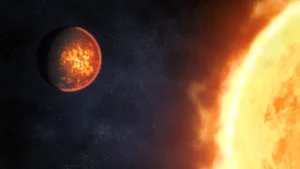
Imagine a world made of diamonds! Exoplanet 55 Cancri e, located approximately 40 light-years away, is a captivating celestial body that has captured the imagination of scientists and enthusiasts alike. A dense atmosphere primarily composed of highly toxic hydrocyanic acid envelops this scorching planet, where temperatures reach a staggering 2400°C (4400°F).
55 Cancri e has an intriguing possibility despite its hostile surroundings: it might be a real diamond treasure trove. The planet’s carbon-rich composition—which comes from a star with an extraordinarily high carbon-to-oxygen ratio—may lead to the formation of massive diamond deposits, according to scientific theory.
If this hypothesis proves to be accurate, it is estimated that nearly one-third of 55 Cancri’s mass could consist of diamonds, potentially totaling an unimaginable quantity of these precious gemstones. The sheer value of this diamond wealth would dwarf any earthly treasures, making 55 Cancri e a true diamond-encrusted gem of the cosmos.
4. Saturn’s Hexagonal Storm
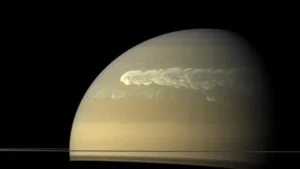
Saturn’s northern pole hosts a mesmerizing hexagon-shaped storm that continues to intrigue scientists. The Voyager spacecraft discovered this multilayered storm in 1981, and the Cassini probe further studied it in 2006. The hexagon, stretching about 29,000 kilometers (18,000 miles) in width and 300 kilometers (190 miles) in height, comprises atmospheric gases that travel at remarkable speeds of approximately 320 km/h (200 mph). Its color even transforms with the Saturnian seasons, shifting from a golden hue in summer to a captivating blue in winter.
5. The Vast Water Cloud
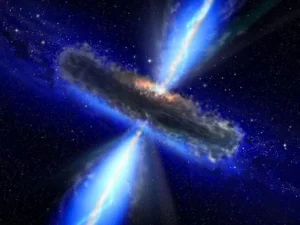
Space harbors mysteries beyond our imagination, including a colossal cloud of water vapor enveloping a quasar located 12 billion light-years away. This mammoth cloud dwarfs our planet’s oceans, containing a staggering 140 trillion times more water. While we’re familiar with water’s presence on Earth and even other celestial bodies, the existence of such an immense cloud provides insight into the boundless scale of cosmic phenomena.
Astronomers using the Atacama Large Millimeter/submillimeter Array (ALMA) discovered this remarkable cloud composed of water vapor, the most abundant molecule in the universe. Its presence around a quasar, a type of galaxy with an immensely energetic central black hole, is particularly intriguing. Scientists believe that the intense radiation from the quasar heats the surrounding gas, causing it to release water molecules.
The light from this distant quasar has taken 12 billion years to reach us, meaning we are observing this cloud of water vapor as it existed when the universe was just a fraction of its current age. This provides a unique window into the conditions that existed in the early universe, offering clues about the formation of galaxies and stars.
6. There are more stars in the universe than grains of sand on all the beaches on Earth.

There are an estimated 7.5 quintillion (7.5 x 10^15) grains of sand on all of the beaches on Earth. This is a lot of sand, but it is still dwarfed by the number of stars in the universe.
There are an estimated 100 billion galaxies in the universe, and each galaxy contains hundreds of billions of stars. This means that there are about 10^22 stars in the universe, which is a number so large that it is hard to even comprehend.
To put this number in perspective, let’s try to imagine how much sand it would take to fill the entire universe. If each star in the universe were the size of a grain of sand, then all of the sand on all of the beaches on Earth would only be enough to fill a tiny fraction of the universe.
So, while there are a lot of grains of sand on all of the beaches on Earth, there are still far more stars in the universe. This is a testament to the vastness and wonder of our universe.
7. Neptune’s Extended Year
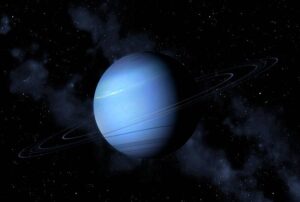
Since its discovery in 1846 by Johann Gottfried Galle and Heinrich d’Arrest (who worked independently), Neptune has only completed one orbit around the Sun. This is because it takes 164.8 Earth years for Neptune to complete a single orbit. This is because it is the last major planet in our solar system and is located at an average distance of 2.9 billion miles from the Sun.
The sun’s gravity is much weaker at Neptune’s distance, and it takes a much longer time for the planet to feel the sun’s pull and complete an orbit. For example, Mercury, the planet closest to the Sun, takes only 88 Earth days to complete an orbit.
The sun’s gravity is much weaker at Neptune’s distance, and it takes a much longer time for the planet to feel the sun’s pull and complete an orbit. For example, Mercury, the planet closest to the Sun, takes only 88 Earth days to complete an orbit.
8. There is water on Mars.
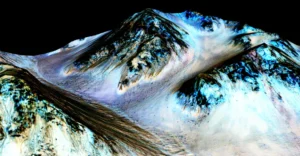
In 2008, NASA’s Phoenix Mars Lander found evidence of water ice just below the surface of Mars. And in 2018, the Mars Reconnaissance Orbiter (MRO) found evidence of liquid water flowing on the surface of Mars. This was a major discovery, as it suggests that Mars may have the conditions necessary for life.
The presence of water on Mars is a major step forward in our search for life beyond Earth. If we can find evidence of life on Mars, it would be a monumental discovery that would change our understanding of the universe. Places where we have found evidence of water on Mars:
- The polar ice caps: The Martian polar ice caps are made up of water ice and carbon dioxide ice. The ice caps are thought to contain as much water as the Earth’s oceans.
- Dark slope streaks: These are dark streaks that appear on the Martian slopes during the warm season. They are thought to be caused by briny water flowing down the slopes.
- Recurring slope lineae: These are dark streaks that appear and disappear on the Martian slopes. Liquid water flowing down the slopes and then evaporating is thought to be the cause of these occurrences.
This suggests that Mars may have once been a habitable planet, and it raises the possibility of life existing there. We are still learning about the Martian water cycle, but the discoveries we have made so far are very promising.
9. Black holes are the most powerful objects in the universe.
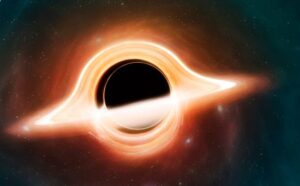
Black holes are incredibly dense. They are so dense that a single black hole the size of a coin would weigh more than the Sun. This is because black holes are made up of the collapsed cores of massive stars. When a star dies, its core collapses in on itself under its gravity. This collapse can cause the core to become so dense that it forms a black hole.
Black holes are also very mysterious. We still don’t know what happens to matter that falls into a black hole. Some scientists hold the belief that matter undergoes destruction, while others maintain the perspective that it undergoes transportation to another dimension.
Despite the mystery surrounding them, black holes are fascinating objects that could hold the key to understanding some of the biggest questions in the universe. For example, black holes may be able to help us understand the nature of gravity and the origin of the universe.
ALSO READ: White Holes in Space: Myth or Reality?
10. There is a Giant Cloud of Alcohol in Space
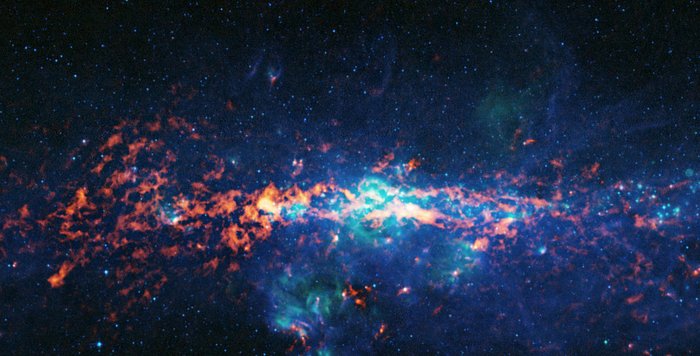
Sagittarius B2, a massive molecular cloud located near the center of the Milky Way galaxy, about 26,000 light-years away, contains a variety of complex organic molecules, including ethyl alcohol (ethanol). This cloud is vast, with enough alcohol to fill an astonishing 400 trillion trillion pints of beer. The discovery of such molecules in space provides valuable insights into the chemical processes occurring in the interstellar medium. These complex molecules are formed through the interaction of gas and dust in the cloud, which can lead to the creation of a wide range of organic compounds. The presence of ethanol in particular is significant, as it is a key component of many biological systems and is often used as a solvent in chemical reactions.
The implications of this discovery are far-reaching. The presence of complex organic molecules in space suggests that the building blocks of life can form in the harsh environment of space. These molecules can survive in space and may play a role in the formation of planets and the emergence of life. Sagittarius B2 is an active area of star formation, and studying it helps astronomers understand how stars and planetary systems develop from clouds of gas and dust.
Conclusion
The universe is full of wonders and mysteries that constantly challenge and expand our understanding. These ten mind-blowing space facts provide just a glimpse into the vastness and complexity of space. Each fact highlights incredible phenomena occurring in the cosmos and emphasizes the importance of scientific exploration and discovery. As we learn more about the universe, we realize how much more there is to discover.
